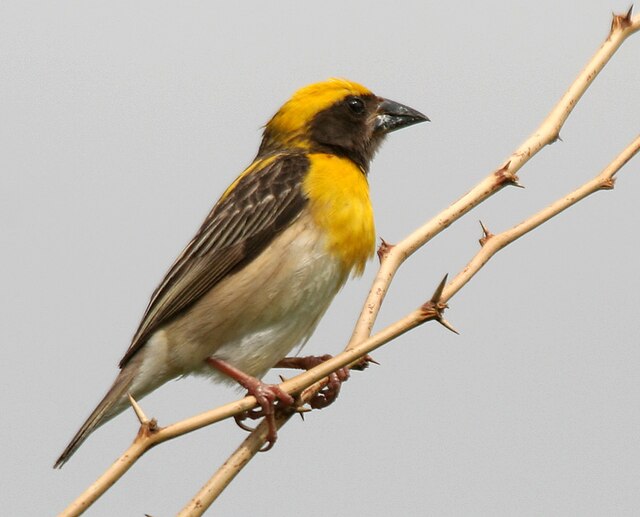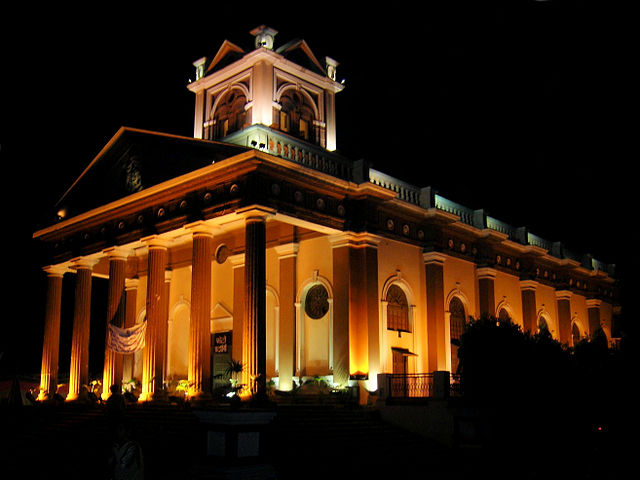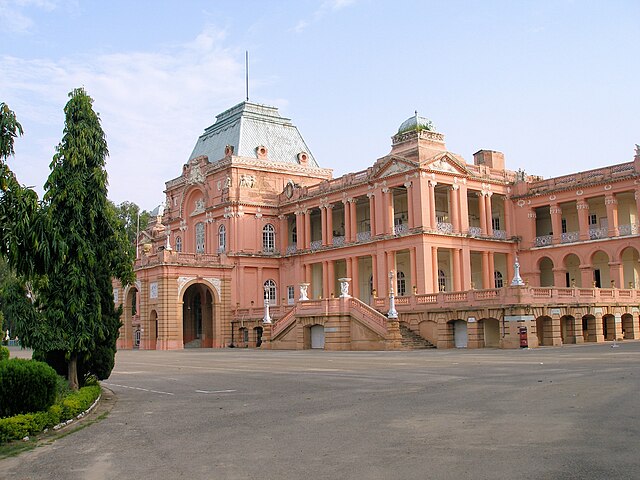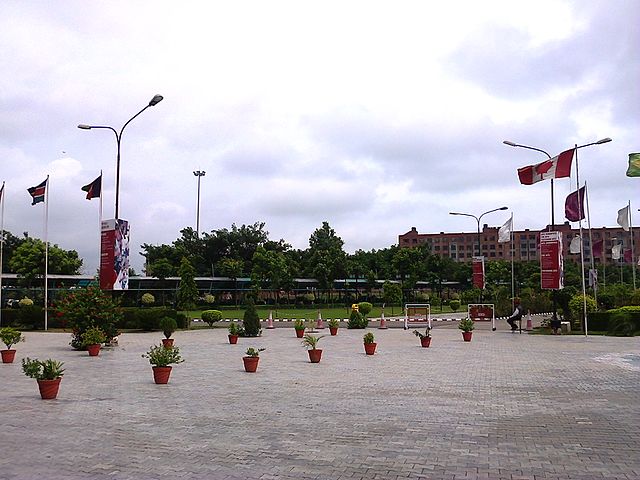Have you ever wondered what makes Kapurthala’s weather so unique? Nestled in the heart of Punjab, this historic city experiences a fascinating blend of climatic conditions that shape the daily lives of its residents and influence everything from agriculture to tourism. Understanding Kapurthala weather isn’t just about checking tomorrow’s forecast—it’s about grasping the intricate dance between geography, seasons, and atmospheric patterns that create this region’s distinctive climate personality.
Kapurthala’s weather story is one of dramatic seasonal shifts, where scorching summers give way to refreshing monsoons, followed by pleasant post-monsoon periods and chilly winters. This subtropical climate creates a rhythm that locals have adapted to over generations, making weather awareness not just useful but essential for anyone living in or visiting this beautiful Punjabi city.
Understanding Kapurthala’s Geographic Location and Weather Influence

Geographic Position and Elevation
Why does location matter so much when it comes to weather? Think of Kapurthala as sitting in nature’s sweet spot—or sometimes, not so sweet! Located at approximately 31.38°N latitude and 75.38°E longitude, this city sits at an elevation of about 229 meters above sea level. This positioning places Kapurthala squarely within the subtropical zone, where the sun’s rays hit with considerable intensity during summer months.
The relatively low elevation means that Kapurthala doesn’t benefit from the cooling effects that hill stations enjoy. Instead, it experiences the full brunt of North Indian plains weather, with temperatures that can soar during peak summer and drop significantly during winter nights. This elevation also influences precipitation patterns, as the city sits in the path of monsoon winds but doesn’t experience the orographic rainfall that mountainous regions receive.
Proximity to Major Weather Systems
Kapurthala’s weather is significantly influenced by its position relative to major weather systems. The city lies in the path of the southwest monsoon, which brings the much-needed annual rainfall between July and September. During winter, western disturbances—those weather systems originating from the Mediterranean—occasionally sweep through the region, bringing unexpected rainfall and cooler temperatures.
The proximity to the Thar Desert, though hundreds of kilometers away, still influences the city’s climate during pre-monsoon months. Hot, dry winds from the desert contribute to the intense heat waves that Kapurthala experiences, making summers particularly challenging for residents and visitors alike.
Seasonal Weather Patterns in Kapurthala
Summer Season (April to June)
Temperature Ranges and Heat Waves
Summer in Kapurthala is like opening an oven door—the heat hits you with an almost tangible force. From April through June, temperatures climb steadily, with May typically being the hottest month. During this period, daytime temperatures regularly soar between 35°C to 45°C (95°F to 113°F), while nighttime offers little respite, with temperatures rarely dropping below 25°C (77°F).
Heat waves are a common occurrence during these months, particularly in May and early June. These aren’t just uncomfortable warm spells—they’re meteorological events where temperatures exceed 40°C (104°F) for consecutive days, sometimes reaching dangerous levels of 47°C (117°F) or higher. The urban heat island effect within Kapurthala city can make these temperatures feel even more intense, as concrete and asphalt absorb and radiate heat throughout the day and night.
Humidity Levels and Comfort Index
What makes Kapurthala’s summer weather particularly challenging isn’t just the temperature—it’s the humidity that often accompanies it. Pre-monsoon humidity levels can range from 40% to 70%, creating a sticky, oppressive atmosphere that makes the actual temperature feel much higher than it is. This high humidity-temperature combination significantly impacts the comfort index, making outdoor activities nearly unbearable during peak afternoon hours.
The discomfort index during summer months often reaches “extremely uncomfortable” levels, particularly between 11 AM and 4 PM. This is when smart locals adjust their routines, scheduling outdoor activities for early morning or late evening hours, much like desert dwellers have done for centuries.
Monsoon Season (July to September)
Rainfall Patterns and Precipitation
When the monsoon finally arrives in Kapurthala, it’s like nature’s air conditioning system suddenly kicks in. The southwest monsoon typically reaches the city by the first week of July, bringing dramatic relief from the scorching summer heat. Annual rainfall in Kapurthala averages between 700mm to 900mm, with the vast majority falling during these three crucial months.
July and August are the wettest months, each receiving 200mm to 300mm of rainfall on average. The precipitation doesn’t arrive in a steady drizzle—instead, it comes in intense bursts, with heavy downpours that can drop 50mm or more of rain in just a few hours. These sudden deluges can transform dusty streets into temporary rivers, showcasing the dramatic power of monsoon weather.
Weather Challenges During Monsoon
While the monsoon brings welcome relief from summer heat, it also presents its own set of challenges. Sudden temperature drops can bring daytime temperatures down to 28°C to 32°C (82°F to 90°F), a dramatic change from the previous months’ scorching conditions. However, high humidity levels persist, often exceeding 80%, creating a different kind of discomfort.
Waterlogging becomes a significant concern during heavy rainfall periods, particularly in low-lying areas of the city. The drainage systems, designed for the typically dry climate, sometimes struggle to cope with intense monsoon downpours, leading to temporary flooding on roads and in residential areas.
Post-Monsoon Period (October to November)
Pleasant Weather Conditions
If Kapurthala weather had a “goldilocks zone,” it would be the post-monsoon period. October and November offer some of the most pleasant weather conditions of the entire year, with temperatures that are neither too hot nor too cold—they’re just right. Daytime temperatures during this period typically range from 25°C to 30°C (77°F to 86°F), while nights cool down to a comfortable 15°C to 20°C (59°F to 68°F).
The humidity levels drop significantly compared to the monsoon season, usually settling between 50% to 65%, creating ideal conditions for outdoor activities. Clear skies become more common, and the air feels fresh and clean after months of either dusty heat or humid rainfall.
Festival Season Climate
This pleasant post-monsoon weather coincides perfectly with India’s major festival season, making it no coincidence that Diwali, Karva Chauth, and other significant celebrations fall during these months. The comfortable temperatures and clear skies create ideal conditions for outdoor festivities, evening gatherings, and the general celebratory atmosphere that characterizes this time of year.
Winter Season (December to March)
Cold Weather Patterns
Winter in Kapurthala brings a completely different weather personality. From December through February, the city experiences its coldest temperatures, with January typically being the chilliest month. Daytime temperatures during peak winter range from 15°C to 20°C (59°F to 68°F), while nighttime temperatures can drop to 5°C to 8°C (41°F to 46°F), and occasionally even lower during particularly cold spells.
The cold isn’t just about temperature—it’s about the dry, crisp air that characterizes North Indian winters. Unlike the humid heat of summer or the muggy monsoon period, winter air in Kapurthala feels clean and sharp, making even relatively mild cold feel more intense.
Fog and Visibility Issues
One of the most significant weather challenges during Kapurthala’s winter months is fog formation. Dense fog episodes, particularly during December and January, can reduce visibility to just a few meters, creating hazardous conditions for transportation and daily activities. These fog events typically occur during early morning hours and can persist until late morning, significantly impacting daily routines.
The fog formation is influenced by several factors: clear skies during night allow rapid heat loss, high humidity from nearby water bodies and irrigated fields, and calm wind conditions that prevent fog dispersal. Understanding these patterns helps locals and visitors plan their activities accordingly.
Monthly Weather Breakdown

Peak Summer Months Analysis
April marks the beginning of the heat buildup, with temperatures starting to climb above 30°C regularly. May represents the peak of summer intensity, where temperatures often exceed 40°C and heat waves become common. June continues the hot trend but often shows signs of pre-monsoon activity, with occasional dust storms and the first hints of monsoon clouds on the horizon.
During these months, the weather isn’t just hot—it’s persistently hot, with little variation between consecutive days. This consistency makes it easier to plan but also means there’s no escape from the heat without artificial cooling systems.
Monsoon Month Details
July typically sees the monsoon’s arrival, bringing dramatic temperature relief but increased humidity. August often receives the highest rainfall amounts and can experience the most intense weather events of the year. September marks the monsoon’s gradual retreat, with decreasing rainfall frequency but still significant precipitation events.
The variability during monsoon months is much higher than other seasons—you might experience a scorching hot morning followed by a afternoon thunderstorm that drops temperatures by 10°C within an hour.
Winter Month Characteristics
December begins the cooling trend, with comfortable daytime temperatures but noticeably chilly evenings. January represents peak winter, with the coldest temperatures and most frequent fog events. February shows the first signs of warming, with longer daylight hours and gradually rising temperatures preparing for the coming spring.
March serves as a transition month, where winter’s grip loosens and temperatures begin their steady climb toward summer conditions.
Weather Forecasting and Prediction for Kapurthala
Modern Weather Prediction Methods
How do meteorologists predict Kapurthala’s weather patterns? Modern forecasting relies on sophisticated computer models that analyze atmospheric data from satellites, weather stations, and upper-air observations. The India Meteorological Department (IMD) uses numerical weather prediction models that can provide reasonably accurate forecasts for up to 7 days in advance.
For Kapurthala specifically, forecasters consider local topographical influences, historical weather patterns, and real-time atmospheric conditions. The accuracy of these predictions has improved significantly over the past decade, particularly for temperature forecasts and major weather events like monsoon onset or winter fog episodes.
Local Weather Stations and Data Sources
Several weather monitoring stations in and around Kapurthala contribute to the overall weather picture. The nearest major meteorological station is in Jalandhar, which provides detailed atmospheric data for the region. Additionally, automatic weather stations scattered throughout Punjab contribute real-time data that helps refine local forecasts.
Farmers and agricultural communities in the Kapurthala region often rely on these forecasts for crucial decisions about planting, harvesting, and crop protection, making accurate weather prediction not just convenient but economically vital.
Climate Change Impact on Kapurthala Weather
Temperature Trend Changes
Is Kapurthala’s weather changing? The evidence suggests yes, and the changes are becoming increasingly noticeable. Over the past few decades, average temperatures have shown an upward trend, with summer highs becoming more extreme and winter lows becoming less severe. This warming trend isn’t unique to Kapurthala—it’s part of broader climate change patterns affecting the entire Indo-Gangetic Plain.
Summer heat waves are becoming more frequent and intense, while winter cold spells are becoming shorter and less severe. These changes affect everything from energy consumption patterns to agricultural practices and public health considerations.
Rainfall Pattern Shifts
Monsoon patterns are also showing signs of change, with increased variability from year to year. Some years bring excessive rainfall leading to flooding concerns, while others experience deficient monsoons that create drought-like conditions. This increased unpredictability poses challenges for agriculture, water resource management, and urban planning.
The timing of monsoon onset and withdrawal has also become less predictable, making traditional weather wisdom less reliable than it once was.
Best Times to Visit Kapurthala Based on Weather

Optimal Tourist Seasons
When should you plan your visit to Kapurthala for the most pleasant weather experience? The post-monsoon period from October through November offers ideal conditions, with comfortable temperatures, clear skies, and low humidity. Winter months from December through February also provide pleasant weather, though early morning fog can sometimes disrupt travel plans.
March can be beautiful for tourism, offering warm but not yet scorching temperatures and generally clear skies. However, avoid planning visits during April through June unless you’re prepared for intense heat, and July through September can be challenging due to heavy rainfall and high humidity.
Weather Considerations for Different Activities
Different activities require different weather considerations. Photography enthusiasts will find the clear skies of post-monsoon and winter months ideal for outdoor shoots. Historical site exploration is most comfortable during cooler months when walking outdoors for extended periods is pleasant rather than exhausting.
Agricultural tourism, which showcases Punjab’s farming heritage, is particularly interesting during different seasons—monsoon season shows the lush green fields, while winter harvesting season demonstrates traditional farming practices.
Weather-Related Challenges and Preparations
Extreme Weather Events
Kapurthala occasionally experiences extreme weather events that require specific preparations. Heat waves during summer can pose serious health risks, particularly for elderly residents and outdoor workers. Sudden intense thunderstorms during monsoon season can cause temporary power outages and transportation disruptions.
Winter fog events, while not dangerous in themselves, can create hazardous conditions for drivers and can delay flights and trains. Understanding these patterns helps residents and visitors prepare appropriately.
Health and Safety Precautions
Different seasons require different health precautions. Summer months demand attention to heat-related illnesses, adequate hydration, and protection from UV exposure. Monsoon season requires awareness of water-borne diseases and the importance of consuming clean, properly prepared food and water.
Winter months, while generally pleasant, can trigger respiratory issues in sensitive individuals due to fog and air quality concerns. Being aware of these seasonal health patterns helps in taking appropriate preventive measures.
Local Weather Folklore and Traditional Predictions
Before modern meteorology, how did people in Kapurthala predict weather patterns? Traditional weather wisdom, passed down through generations, relied on natural indicators like animal behavior, plant responses, and atmospheric observations. Many of these traditional methods still hold some validity and are used by agricultural communities alongside modern forecasts.
For example, the behavior of certain birds often indicates approaching weather changes, and the appearance of specific cloud formations can signal the arrival of monsoon rains. While not scientifically precise, these traditional observations reflect centuries of careful attention to natural patterns.
Conclusion
Understanding Kapurthala weather is like learning to read nature’s calendar—each season brings its own character, challenges, and beauty. From the intense heat of summer that tests human endurance to the life-giving monsoon rains that refresh the entire landscape, from the pleasant post-monsoon period perfect for celebrations to the crisp winter days that bring their own unique charm, Kapurthala’s weather patterns create a rich tapestry of climatic experiences.
Whether you’re a resident planning your daily activities, a farmer timing your agricultural operations, or a visitor choosing the best time to explore this historic Punjabi city, understanding these weather patterns enhances your ability to make informed decisions. Climate change may be altering some traditional patterns, but the fundamental seasonal rhythm continues to shape life in Kapurthala.
The key to living with or visiting Kapurthala’s weather lies in respect for its intensity and preparation for its variability. Each season offers something unique—embrace the monsoon’s dramatic refreshment, enjoy the post-monsoon’s perfect balance, appreciate winter’s crisp clarity, and find ways to cope with summer’s fierce heat. After all, it’s this very diversity of weather experiences that makes Kapurthala’s climate story so fascinating and memorable.
5 Unique FAQs
1. What is the hottest temperature ever recorded in Kapurthala, and when does extreme heat typically occur?
While exact historical records for Kapurthala specifically may vary, temperatures have been known to exceed 47°C (117°F) during severe heat wave conditions, typically occurring in May and early June. The most extreme heat usually happens between 1 PM and 4 PM during these peak summer months. Local weather stations record that consecutive days of 45°C+ temperatures are not uncommon during severe heat wave events.
2. How accurate are weather forecasts for Kapurthala, and which aspects are most reliable?
Weather forecasts for Kapurthala are generally quite accurate for temperature predictions (about 85-90% accuracy for 24-48 hour forecasts) and reasonably reliable for major weather events like monsoon onset or heat waves. However, precise rainfall timing and intensity can be challenging to predict, especially during monsoon season when local atmospheric conditions can change rapidly. Fog predictions during winter months are moderately reliable but can be affected by local microclimate conditions.
3. Does Kapurthala experience any unique weather phenomena not common in other parts of Punjab?
While Kapurthala shares many weather characteristics with other Punjab cities, its specific location creates some unique microclimatic conditions. The city can experience slightly different fog patterns due to local water bodies and urban heat island effects. Additionally, its position relative to monsoon tracks can sometimes result in different rainfall amounts compared to neighboring cities, even those just 50-100 kilometers away.
4. How has climate change specifically affected Kapurthala’s weather patterns over the past 20 years?
Over the past two decades, Kapurthala has experienced several notable climate-related changes: summer temperatures have increased by approximately 1-2°C on average, heat waves have become more frequent and intense, winter cold periods have shortened, and monsoon patterns have become more erratic with increased year-to-year variability. Additionally, extreme weather events, both heat waves and intense rainfall episodes, have become more common.
5. What are the best weather apps or sources for getting accurate Kapurthala weather information?
For Kapurthala weather information, the India Meteorological Department (IMD) website and app provide the most reliable official forecasts. Popular weather apps like AccuWeather, Weather.com, and Skymet also offer location-specific forecasts for Kapurthala. For agricultural communities, the IMD’s specialized agricultural weather services and local agricultural department weather advisories provide targeted information. Local residents often find that combining multiple sources gives the most comprehensive weather picture, especially during transitional seasons.

